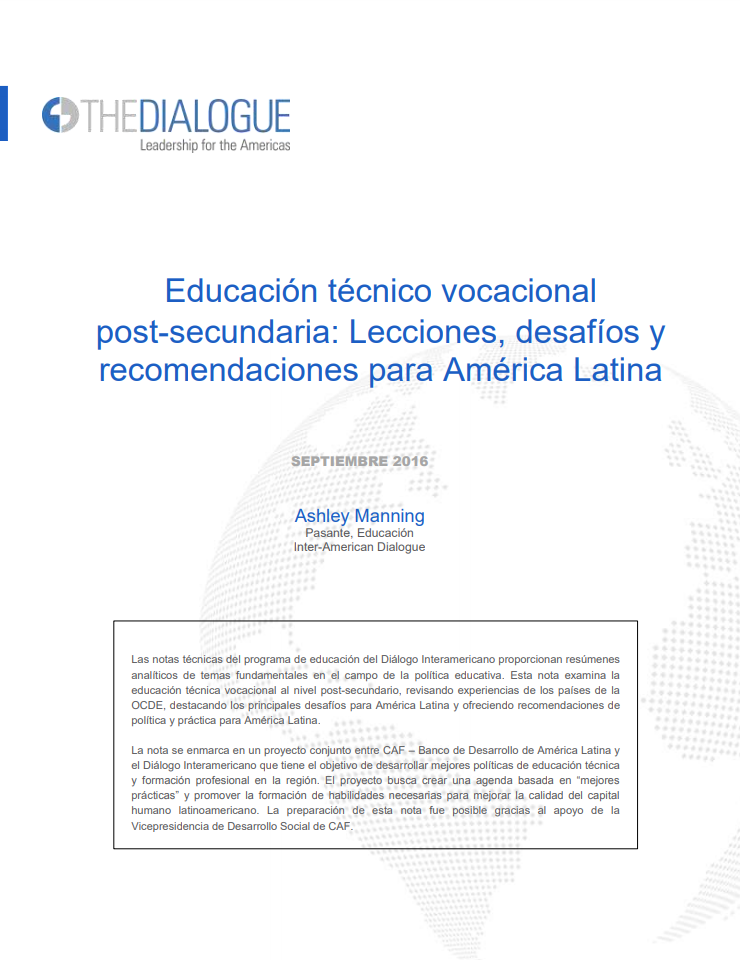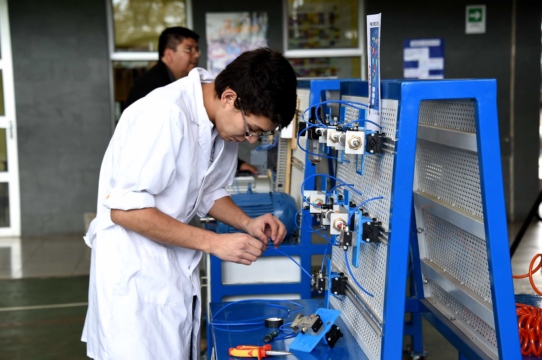
Latin America’s Productivity Challenge
There is a gap between the skills that the Latin American workforce offers and the skills that companies in the region demand.
This post is also available in: Español
Post-secondary technical vocational education (TVE) is primarily directed towards youth that have recently finished high school, preparing them directly for the labor market. Post-secondary TVE programs focus on practical knowledge and tend to be directly linked to a particular industry or profession. They last a minimum of six months but are usually shorter than a full tertiary, academic education, and lead to a title or certification.
There are multiple studies that point out or speculate about the benefits of TVE, particularly highlighting its potential to improve social integration and human capital competitiveness at a national scale. However, a major limitation to contemporary understandings of post-secondary TVE at scale is the fragmentation and general lack of understanding that exists between different post-secondary TVE systems both at domestic and international levels. There is a general lack of coordination and consistency between key actors in TVE systems that hinders the development of cross-country, large-scale studies.
OECD countries present some of the best examples of well-developed and integrated post-secondary ETV programs. Countries like Sweden and Australia particularly stand out. The examples put forth by these countries can be greatly valuable to Latin America, where post-secondary TVE has been rapidly expanding during the last decade. This document is broken down into three main sections. First, it reviews lessons from OECD experiences with post-secondary TVE. Then, it analyzes the current development of post-secondary TVE in Latin America, putting particular emphasis on key challenges across the region. Finally, it offers recommendations for post-secondary TVE in the region.
There is a gap between the skills that the Latin American workforce offers and the skills that companies in the region demand.
What are the main benefits and challenges of secondary technical and vocational education for Latin American countries?
Online competency-based education (OCBE) has emerged as a viable option to help reduce the skills gap in the Americas


